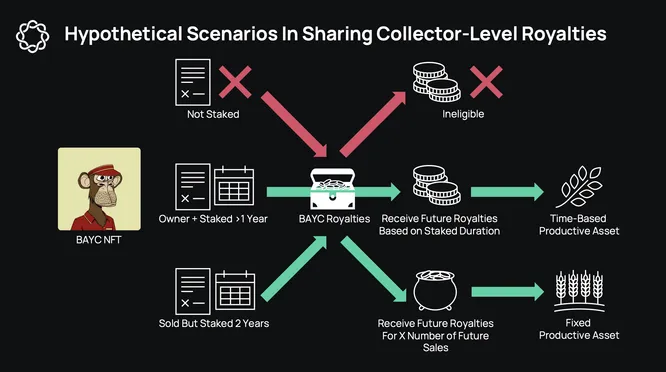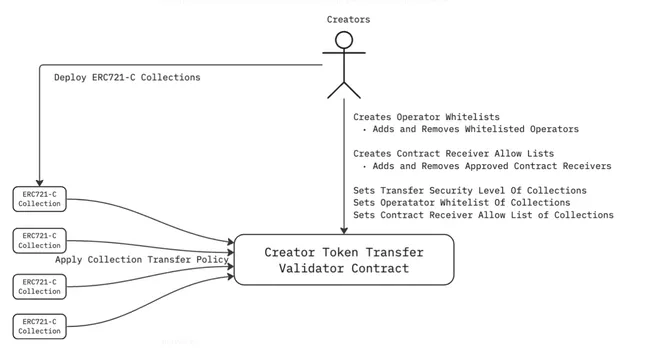In January, Limit Break released the first edition of its Creator Tokens – a further developed version of EIP-4910’s on-chain royalty solution. The reasons were two-fold. First, to shift the power from NFT exchanges towards creators and collectors. And second, to create royalty standards that offer solutions suiting the complexities of crypto game economies.
The current EIP-2981 standard is a royalty payment signal that must be implemented through good faith and cooperation. Royalty payments are voluntary because the royalty fees are stored on-chain but enforcing payment is not.

With Limit Break’s Creator Token contracts, NFT collections can opt into programmable royalties and a Minimum Floor Operator contract by staking. However, they also require creators to align incentives with their communities correctly to encourage staking. A hypothetical use case is by sharing Collector-Level royalties. The owner will receive future royalties if an NFT is staked for longer than the minimum eligibility period. After the owner has sold their NFT, they can receive a share of sale royalties based on the staked duration, making it a time-based, productive asset.
This week, Limit Break has formalized the Creator Token standard into the ERC721-C standard. Creators now have flexibility in how royalties from their collection can be shared between creators, communities, partners, and affiliates. A TLDR has been summarized below.

Basic Royalties: The most basic form of programmable royalties, where the contract owner can set the default collection and/or per-token royalty settings.
Minter-Only Royalties: Grants 100% of royalties to the minter of each individual token.
Shared Royalties: Uses Payment splitters to share royalties between the creator and token minters.
Transferrable Royalties: Uses a secondary NFT to represent ownership of royalties. The minter receives the NFT royalty rights to start, but the rights can be transferred to another wallet.
Implementing royalties on-chain makes NFTs a more equitable environment for all parties involved. With creators now possessing unrivaled power through whitelisting exchanges and individuals, they must correctly align incentives to balance the community’s harmony, the longevity of the project, and the stakeholders’ share in the revenue. Only time will tell whether creators can utilize new tools to revive interest and activity in NFTs.